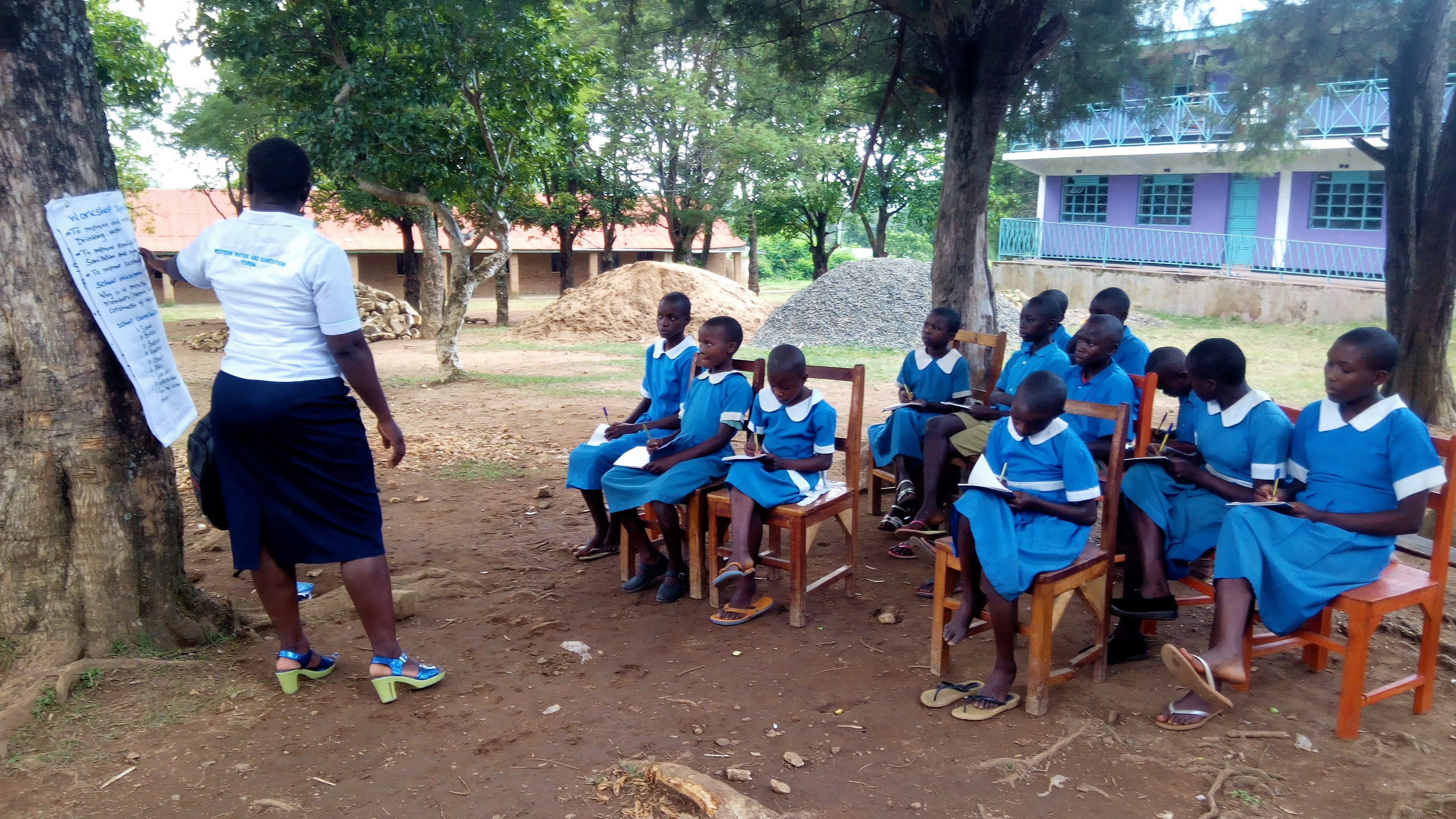This project is a part of our shared program with Western Water And Sanitation Forum (WEWASAFO). Our team is pleased to directly share the below report (edited for clarity, as needed).
Welcome to the School
Pupils are seen coming into the school compound early in the morning with three and five-liter jerrycans full of water and balanced with their school books upon their backs. Their morning study hall begins at 6:30am before normal classes at 8am. Between the two, students are required to clean their classrooms. Lower classes collect litter all around school grounds, while upper classes clean the latrines and classrooms. They are required to stay for games and sports out on the field before they go home at the end of the day.
The school has a total enrollment of 795 students and employs 17 teachers. There are also several preschool children that come for classes in the morning. (Editor's Note: While this many people may have access on any given day, realistically a single water source can only support a population of 350-500 people. This community would be a good candidate for a second project in the future so adequate water is available. To learn more, click here.)
Water Situation
Students are required to carry water with them every morning for cleaning, cooking, and drinking purposes. They are also sent out in search of water throughout the day, for there is very limited water on school grounds. They have a plastic tank that has 2,300 liters of space for rainwater; even when full after a storm, this tank is drained within just a few days. The school also has a larger 10,000-liter plastic tank, but this does not have any gutters to collect rainwater.
When students are sent out with their empty containers, they walk to a spring about 500 meters across the road. Crossing the busy road in front of the school puts these students in danger. But not only that, the water they fetch from the spring is contaminated and introduces them to waterborne diseases. This is a spring located in the community, and community members also report these same struggles. It was protected quite a few years ago, but has since fallen apart and opened the water to contamination once again. There is also stagnant water that needs to be drained; the puddles are breeding grounds for mosquitoes that introduce malaria to students and the community.
Sanitation Situation
During breaks between classes, students line up to use the few latrines available. The school has a total of 14 toilet doors, three of which are almost full. Eight doors are available for girls, while six doors are for boys. This is still far below the requirement by UNICEF that recommends, 1 door to serve 25 girls and 1 door to serve 30 boys. That's more than 50 students per latrine! Not only does this long wait cut into class time, but the combination of limited water access and gross overuse of each latrine means that they're filthy for the greater part of the day. Furthermore, many students cannot bear the long wait and seek the privacy behind buildings and bushes. There aren't even any hand-washing stations for students to use after the latrine.
Plans: Hygiene and Sanitation Training and Hand-Washing Stations
Training will be held for two days. The facilitator will use PHAST (participatory hygiene and sanitation transformation), ABCD (asset-based community development), CTC (child to child), lectures, group discussions, and handouts to teach health topics and ways to promote good practices within the school. The CTC method will prepare students to lead other students into healthy habits, as well as kickstart a CTC club for the school. This CTC club will oversee the new facilities, such as hand-washing stations, and make sure they are kept clean and in working condition. The two hand-washing stations will be delivered to the school, and the club will fill them with water on a daily basis and make sure there is always a cleaning agent such as soap or ash.
Plans: VIP Latrines
Two triple-door latrines will be constructed with local materials that the school will help gather. Three doors will serve the girls while the other three serve the boys. And with a new source of water on school grounds, students and staff should have enough to keep these new latrines clean.
Plans: Rainwater Catchment Tank
A 50,000-liter rainwater catchment tank will help alleviate the water crisis at this school. The school will also help gather the needed materials such as sand, rocks, and water from the spring for mixing cement. Once finished, this tank can begin catching rainfall that will be used by the school’s students and staff. Students will no longer have to leave their school in search of water.
This intervention comes at a great time for the school as they look to serve the children with special needs in their community. Without an adequate clean water source on school grounds, these students would have to be sent out to fetch water as well.
We and the school strongly believe that with this assistance, standards will significantly improve. These higher standards will translate to better academic performance!

 Rainwater Catchment
Rainwater Catchment
 Rehabilitation Project
Rehabilitation Project

































